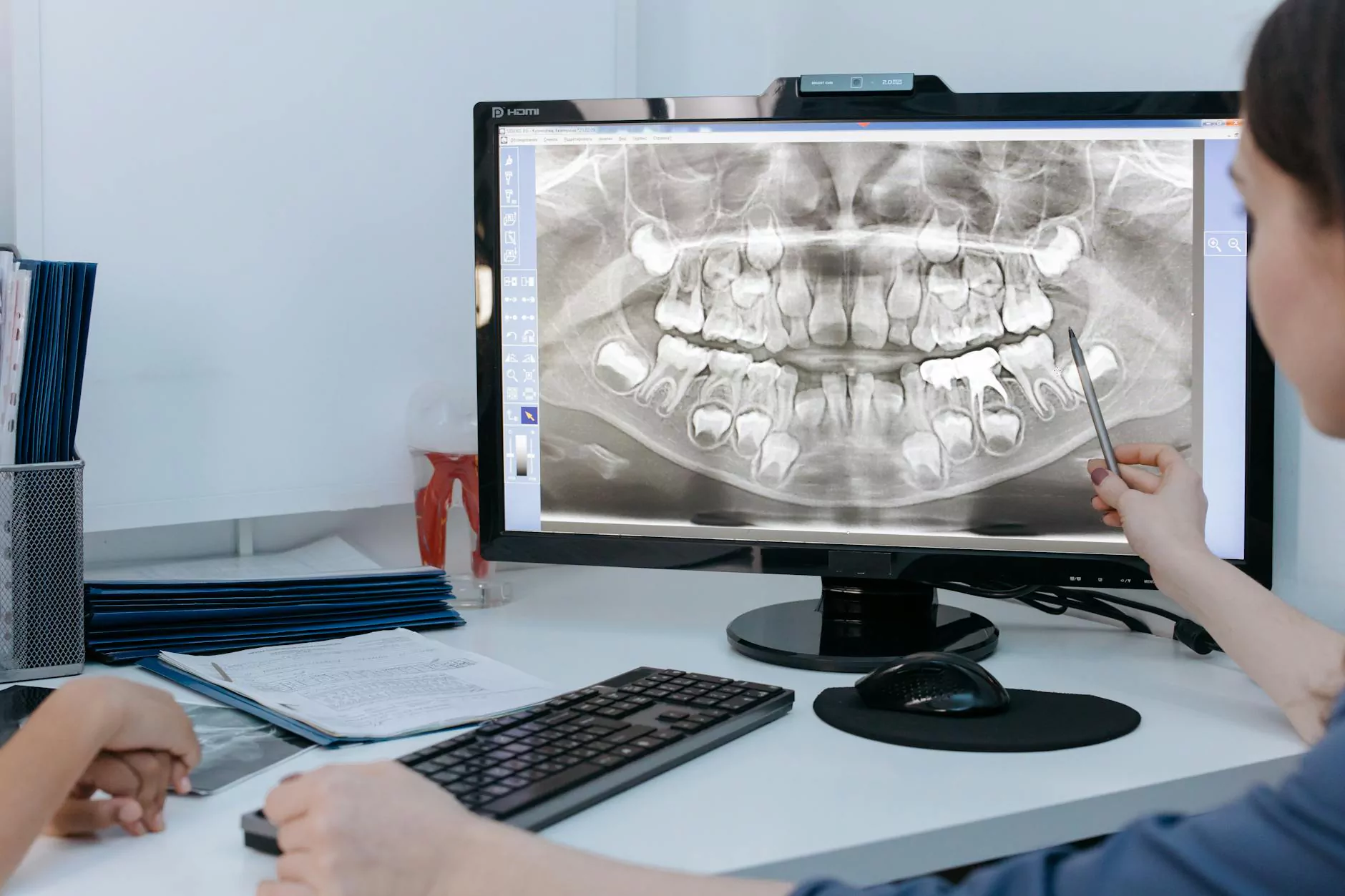Understanding Shoulder Internal Rotation: A Key to Shoulder Health and Function

The shoulder joint is one of the most versatile and complex joints in the human body, enabling a remarkable range of motion essential for daily activities, sports, and occupational tasks. Among its various motions, internal rotation is critical for shoulder functionality and overall upper limb mobility. In this comprehensive guide, we delve into the intricacies of shoulder internal rotation, its significance in health and medical contexts, rehabilitation, and how professional interventions, including chiropractic care, can optimize shoulder health.
Understanding Shoulder Anatomy and the Role of Internal Rotation
The shoulder is a ball-and-socket joint formed primarily by the humerus (upper arm bone), scapula (shoulder blade), and clavicle (collarbone). It possesses a remarkable range of motion thanks to its architecture, including the glenoid cavity of the scapula and the surrounding rotator cuff muscles.
Internal rotation specifically refers to the movement where the humerus rotates towards the midline of the body, bringing the forearm and hand inward. This motion is essential for activities such as reaching behind your back, tucking in a shirt, or preparing to throw a ball. Proper shoulder internal rotation depends on the strength, flexibility, and coordination of several muscles, primarily including the subscapularis, pectoralis major, and anterior deltoid.
The Significance of Shoulder Internal Rotation in Daily Life and Sports
Maintaining optimal shoulder internal rotation is crucial for both functional movement and injury prevention. Limited internal rotation can lead to compensatory movements, overuse injuries, and chronic discomfort, impacting quality of life and athletic performance.
In athletes, especially pitchers, swimmers, and tennis players, shoulder internal rotation often becomes a focal point of performance and rehabilitation. For instance, a baseball pitcher relies heavily on this motion for proper throwing mechanics; deficits can cause pain, decreased performance, and increased injury risk.
Common Causes of Impaired Shoulder Internal Rotation
- Overuse injuries — repetitive stress from sports or work activities can cause microtrauma to the shoulder structures.
- Rotator cuff tears or tendinopathy — damage to tendons, especially the subscapularis muscle, hampers internal rotation.
- Frozen shoulder (adhesive capsulitis) — characterized by stiffness and restricted movement, including internal rotation.
- Postural imbalances — poor ergonomics and muscle imbalances can limit movement and cause compensations.
- Previous shoulder injuries or surgeries — scar tissue, stiffness, or weakness can impair internal rotation.
Diagnosis and Clinical Assessment of Shoulder Internal Rotation
Proper evaluation by health professionals such as orthopedic specialists or chiropractors is vital for diagnosing shoulder internal rotation issues. The assessment typically includes:
- Range of motion testing: Measuring active and passive internal rotation using a goniometer.
- Strength evaluation: Testing muscle strength, especially of the subscapularis and other internal rotators.
- Stability and impingement tests: Identifying mechanical issues contributing to mobility restrictions.
- Imaging studies: MRI or ultrasound if tissue damage or structural abnormalities are suspected.
Effective Strategies to Improve Shoulder Internal Rotation
Restoring or enhancing shoulder internal rotation requires a multifaceted approach tailored to the root cause. Here are key strategies used by medical and rehabilitation professionals:
1. Flexibility and Stretching Exercises
Gentle stretching can elongate tight capsular tissue, tendons, and muscles, restoring mobility. Examples include:
- Cross-body shoulder stretch: Gently pull the arm across your chest to stretch the posterior capsule.
- Sleeper stretch: Lying on your side with the arm bent at 90°, gently press the forearm downward to target internal rotation flexibility.
- Doorway pec stretch: Opens up the anterior shoulder muscles that may contribute to restricted internal rotation.
2. Strengthening the Internal Rotators
Building strength in muscles like the subscapularis enhances control and resilience. Strengthening routines include:
- Internal rotation with resistance bands: Focused rotations with moderate resistance increase muscle capacity.
- Isometric internal rotation exercises: Pushing against immovable objects for muscle activation without joint movement.
3. Manual Therapy and Chiropractic Interventions
Chiropractors with specialization in sports and orthopedic care can perform manual therapies to improve shoulder internal rotation. Techniques include joint mobilizations, soft tissue therapy, and thesis-specific adjustments to alleviate restrictions and restore mobility.
4. Postural and Ergonomic Optimization
Improper posture, especially rounded shoulders or forward head positions, can compromise shoulder mechanics. Corrective exercises and ergonomic adjustments support optimal movements and prevent further limitations.
The Role of Chiropractic Care in Enhancing Shoulder Mobility
Chiropractors frequently assist in improving shoulder function through targeted manipulation and mobilization techniques. Their holistic approach considers muscle imbalances, joint restrictions, and nervous system involvement, which are often factors in decreased shoulder internal rotation.
Chiropractic interventions may include:
- Joint mobilizations to increase joint play and restore smooth movement.
- Soft tissue therapy to relax tight muscles and tendons affecting shoulder motion.
- Rehabilitative exercises and stretching guidance tailored to individual needs.
- Postural correction to ensure proper alignment and shoulder biomechanics.
Preventive Measures and Maintenance for Shoulder Health
Preventing decline in shoulder internal rotation involves consistent care and mindful activity. Strategies include:
- Regular stretching to maintain flexibility.
- Strengthening shoulder stabilizers and internal rotators.
- Proper warm-up before physical activities to prepare the muscles and joints.
- Being attentive to pain or discomfort signals, avoiding overuse or improper techniques.
- Periodic professional assessments, especially after injury or inactivity periods.
Research Advances and Future Outlook in Shoulder Mobility Improvement
Emerging technologies like ultrasound-guided therapy, laser treatment, and digital biofeedback are being increasingly utilized in clinics specializing in shoulder rehabilitation. Advances in understanding the biomechanics of internal rotation and the development of personalized exercise protocols continue to enhance recovery outcomes.
Furthermore, interdisciplinary approaches combining chiropractic, physical therapy, and medical interventions are leading to holistic solutions that foster quicker and more sustainable improvements in shoulder internal rotation.
Conclusion: Empowering Your Shoulder Health Through Knowledge and Professional Support
In summary, shoulder internal rotation is a vital component of upper limb mobility, significantly impacting daily activities, athletic performance, and overall quality of life. Recognizing the signs of impairment early and adopting targeted strategies—ranging from stretching and strengthening to professional interventions like chiropractic care—can dramatically improve shoulder functionality.
Whether you are an athlete seeking peak performance, an individual recovering from injury, or someone committed to maintaining shoulder health, understanding the importance of shoulder internal rotation and actively working to preserve it will ensure long-lasting mobility and well-being. Consulting with qualified healthcare providers, including chiropractors, can provide personalized solutions torestore optimal shoulder function and prevent future issues.
Remember, a proactive approach rooted in education, proper technique, and professional support is your best ally in achieving robust shoulder health. Take action today to prioritize your shoulder mobility and enjoy the freedom of movement for years to come.









